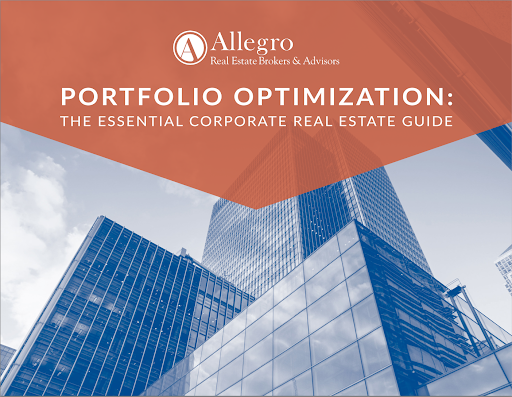The base rent provision is one of the most important clauses in a commercial lease, as it outlines the tenant’s rent obligations. During the rent negotiation process, tenants and landlords discuss rental rates, escalations year over year, and any free-rent periods, ultimately agreeing on the base rent.
Landlords determine whether tenants will pay their base rent amount plus other expenses (net lease) or a fixed, flat base rent amount (gross lease).
But before you enter into base rent negotiations, it’s essential to understand how it’s calculated. Continue reading to learn more about how base rent is determined and the difference between various rent structures.
How Is Base Rent Calculated?
The base rent for commercial space is usually calculated by applying a rental rate to the square footage of the space:
Base rent = Square footage x rental rate.
Note: Base rent is calculated with rentable square footage, not usable square footage. Sometimes, such as in industrial and retail leases, the rentable and usable square footage are the same. Take a look at the differences below.
- Rentable square feet. Includes common areas such as hallways, restrooms, and elevators, often shared with other tenants of the building.
- Usable square feet. Includes all square footage of the space used solely by the tenant leasing the space. This includes private storage spaces, offices, etc.
In addition to the amount of usable square footage, factors like the property’s type, location, amenities, size, tenant allowances, and local market conditions can also affect the base rental rate negotiated between the landlord and tenant.
Although the base rent provision of your lease agreement may seem simple, it can be presented in a variety of different ways.
Net Leases vs. Gross Leases
The two most common types of lease agreements are net leases and gross leases, and base rent looks different in each.
Net Leases
Net leases, often known as triple net (NNN) leases, include only the base rental rate, and are typically seen in retail and industrial properties. To cover the cost of insurance, taxes, and common area maintenance charges, tenants must pay their pro-rata share of these expenses on an annual basis.
Landlords will typically estimate these charges every month and reconcile them annually. Because of this, it’s recommended that tenants negotiate a cap on the additional rent amount, especially the costs controlled by the landlord.
Gross Leases
In gross leases, also referred to as “all-inclusive” leases, tenants pay a fixed, flat fee for the use of the space, and the landlord is responsible for any and all expenses of the property. To recoup some of these costs, the landlord charges the tenant a base rent per square foot and additional operating expenses per square foot for amounts that exceed the base year expenses. It is also recommended that tenants negotiate a cap on the increase of controllable expenses in this form of additional rent.
Commercial Lease Types, Explained
While net leases and gross leases are two of the most common types of leases, others do exist. The following chart outlines several other commercial real estate lease types, associated expenses, and the asset types where these leases are likely seen.
Lease Type |
Expenses |
Most Common Asset Type(s) |
Gross Lease |
Tenant pays rent, landlord pays all operating costs. |
Office |
|
Modified Gross Lease |
Tenant pays rent plus a percentage of yearly operating expenses. |
Office |
|
Net Lease |
Tenant pays rent, a portion of taxes, insurance, and maintenance. |
Industrial, Retail |
|
Single Net Lease |
Tenant pays rent and all property taxes. |
Industrial, Retail |
|
Double Net Lease |
Tenant pays rent, taxes, and insurance. |
Industrial, Retail |
|
Triple Net Lease |
Tenant pays rent, taxes, insurance, and maintenance costs. |
Industrial, Retail |
|
Absolute Net Lease |
Tenant pays rent, building expenses, and all structure and roof upkeep and repairs. |
Industrial, Retail |
|
Percentage Lease |
Tenant pays rent and a percentage of their monthly revenue. |
Retail |
Enter CRE Base Rent Negotiations With Confidence
Getting a fair and attractive base rent isn’t guaranteed. That’s why it’s essential that you understand how base rent is calculated and how it could be positioned in your commercial lease agreement.
Before entering into base rent negotiations, it’s always wise to connect with a team of experienced commercial real estate brokers like Allegro Real Estate Brokers & Advisors to help you navigate the process.







